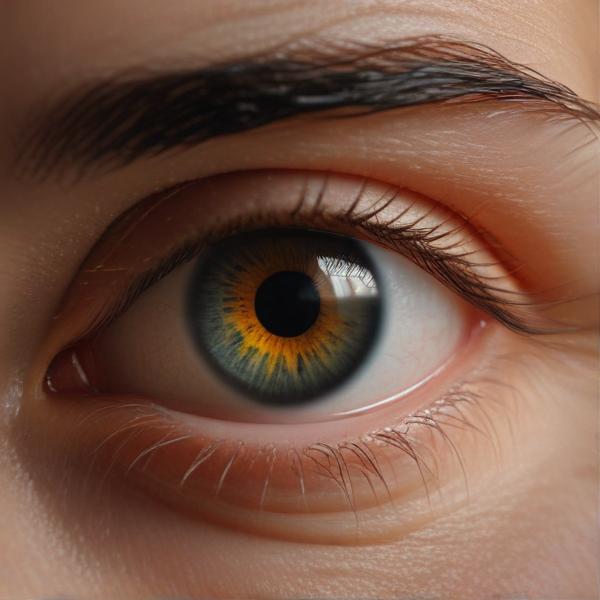基本信息 (Basic Information)
含义与用法 (Meanings & Usage)
中文核心释义 (Core Chinese Meaning): 眼睛,视觉器官,亦引申为孔、洞或观测点。
英文核心释义 (Core English Meaning): eye; organ of vision; also extension for hole or observation point.
象形意义 / 为何这么写 (Pictographic Meaning / Writing Rationale)
文言文释义 (Classical Chinese Meaning)
与现代意义相近,主要指眼睛,有时也泛指孔洞或事物的要点。Similar to modern meaning, mainly referring to the eye, sometimes also denoting a hole or a key point.
深入学习 (In-depth Study)
字源故事 (Origin Story)
字形演变 (Character Evolution)
常用词语和例句 (Common Words & Examples)
眼睛 (eye (the organ of vision))
她有一双明亮的眼睛。
Eng: She has a pair of bright eyes.
针眼 (the eye of a needle; also, a stye (on the eyelid))
我找不到针眼太小了。
Eng: I couldn't find it; the needle's eye is too small.
眼光 (vision; insight; perspective)
他的眼光很独到。
Eng: He has unique insight.
相关成语 (Related Idioms)
火眼金睛
Meaning: penetrating insight; sharp eyes (literal: fiery eyes with golden pupils, often referring to the Monkey King’s ability to see through illusions)
多语言翻译 (核心释义) (Translations (Core Meaning))
- French: œil
- German: Auge
- Spanish: ojo
- Italian: occhio
- Portuguese: olho
- Russian: глаз
- Arabic: عين
- Persian: چشم
- Dutch: oog
- Polish: oko
- Vietnamese: mắt
- Ukrainian: око
视频学习资源 (Video Learning Resources)
通过以下链接在热门视频网站搜索 "眼" 的更多讲解:
Search for more explanations of "眼" on popular video sites:
- 在 Bilibili.com 搜索 "眼 字源 说文解字" (Search on Bilibili)
- 在 YouTube.com 搜索 "眼 character origin etymology" (Search on YouTube)
网络参考 (Web References for "眼") ()
网络内容摘要 (Web Content Summary):
基本含义及起源:“眼”(拼音:yǎn)是常用汉字,其本义是指“眼睛”,即人和动物的视觉器官。该字最早见于篆文,属于形声字,从“目”旁,表示与眼睛相关,声旁“艮”表音。眼也可指“眼珠”、“眼神”或“视觉能力”。 Basic meaning & origin: “眼” (yǎn) means “eye,” the visual organ of humans and animals. It’s a common Chinese character, originally seen in seal script. “眼” is a phono-semantic compound: the “目” element signifies the eye relation, and “艮” provides the sound.
- 象形与文化背景: “目”旁象形眼睛,“艮”作为声旁也与“看”相关。“眼”还可以引申为“关键部位”或“孔洞”(如针眼),在文化中强调视觉和洞察力的重要性。 Pictographic & cultural note: The “目” part visually represents an eye. “眼” can also metaphorically mean “key part” or “hole” (e.g., “针眼” – needle’s eye), highlighting the eye’s central role in perception.
- 常见用法及易混点: “眼”常见于词语如“眼睛”(eye)、“眼神”(expression in one's eyes)、“眼力”(eye power),或成语如“火眼金睛”(fiery eyes with golden pupils, meaning sharp observation)。与“目”同为与视觉相关的字,但“目”更通用,指较正式或书面语义,如“目睹” (witness)。注意不要将“眼”仅理解为眼球,实际用于比喻和延伸义较多。 Common usages & confusions: Found in words like “眼睛” (eye), “眼神” (expression), “眼力” (insight), and in idioms like “火眼金睛” (sharp eyes). “目” (mù) is a related character but used more in literary contexts (“目睹” = to witness). “眼” is widely used metaphorically, not just literally for ‘eyeball’.
结论:“眼”不仅表示生理上的眼睛,还广泛用于指事物的核心和洞察力,是日常交流及文化表达的重要汉字。 Conclusion: “眼” refers both to the eye and to metaphoric meanings like essence or insight, making it fundamental in Chinese language and culture.
汉字"眼"的起源、演变过程-汉字字源辞典
《古文典》1319页 《古文典》1319页"限"字偏旁 《古文典》1319页"很"字偏旁 《说文》70页. 形声字。从目,艮 ( gèn ) 声。 形旁目为眼睛之象,表示眼的本义与目有关。声旁艮是会意字见的反文与分化字 (见与艮同为见纽,元文旁转) ,本义是"很",不相听从,于眼表音,眼与艮同为牙音﹑ ...
眼(汉语文字)_百度百科
眼(拼音:yǎn)是汉语通用规范一级汉字(常用字)。此字始见于篆文,产生时间可能更早。眼本义指眼睛,是人和动物的视觉器官;引申指眼珠、眼神、眼力、用眼看、像眼一样的事物;眼处于眼窝内,因而有孔洞义;人无目则盲,故事物的关键亦称眼。(基本信息主要来源:《新华写字字典 第2 ...
更多图片 (眼 More Images) ()
